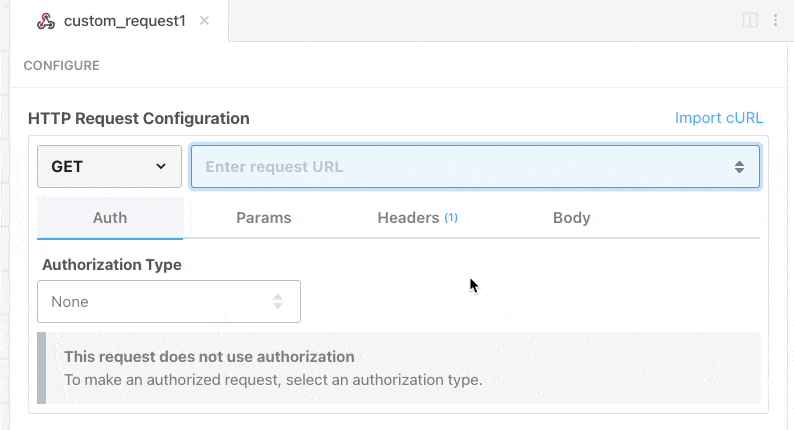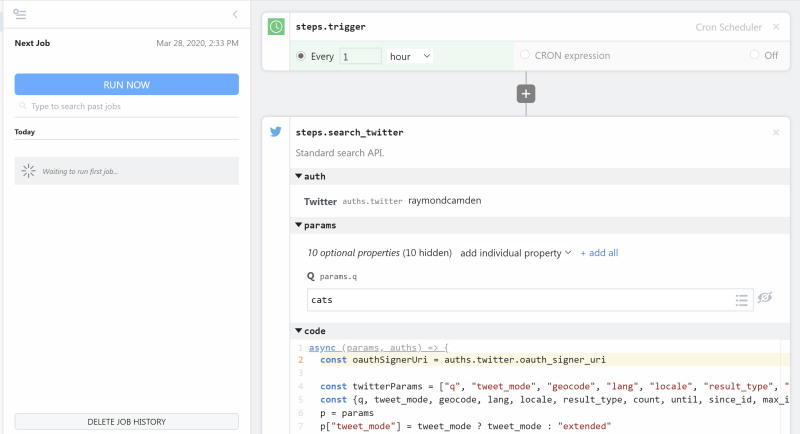What do you want to automate
with HTTP / Webhook and Oracle Cloud Infrastructure?
Prompt, edit and deploy AI agents that connect to HTTP / Webhook, Oracle Cloud Infrastructure and 3,000+ other apps in seconds.
Trusted by 1,000,000+ developers from startups to Fortune 500 companies
Popular Ways to Connect HTTP / Webhook with Oracle Cloud Infrastructure#
Popular HTTP / Webhook and Oracle Cloud Infrastructure Triggers#
Get a URL and emit the full HTTP event on every request (including headers and query parameters). You can also configure the HTTP response code, body, and more.
Get a URL and emit the HTTP body as an event on every request
Emit new event when a new autonomous database is created in a specified compartment. See the documentation
Emit new event when a compute instance changes state (e.g., from stopped to running). This requires instance OCID and proper event rules set up in Oracle Cloud Infrastructure. See the documentation
Emit new event when a new object is uploaded to a specified Oracle Cloud Infrastructure Object Storage bucket. See the documentation
Popular HTTP / Webhook and Oracle Cloud Infrastructure Actions#
Create or update an object in a specified Oracle Cloud Infrastructure Object Storage bucket. See the documentation
Delete an object from a specified Oracle Cloud Infrastructure Object Storage bucket. See the documentation
Send an HTTP request using any method and URL. Optionally configure query string parameters, headers, and basic auth.
Send an HTTP GET request to any URL. Optionally configure query string parameters, headers and basic auth.
Send an HTTP POST request to any URL. Optionally configure query string parameters, headers and basic auth.
Overview of HTTP / Webhook#
Build, test, and send HTTP requests without code using your Pipedream workflows. The HTTP / Webhook action is a tool to build HTTP requests with a Postman-like graphical interface.

Point and click HTTP requests
Define the target URL, HTTP verb, headers, query parameters, and payload body without writing custom code.

Focus on integrating, not authenticating
This action can also use your connected accounts with third-party APIs. Selecting an integrated app will automatically update the request’s headers to authenticate with the app properly, and even inject your token dynamically.

Pipedream integrates with thousands of APIs, but if you can’t find a Pipedream integration simply use Environment Variables in your request headers to authenticate with.
Compatible with no code actions or Node.js and Python
The HTTP/Webhook action exports HTTP response data for use in subsequent workflow steps, enabling easy data transformation, further API calls, database storage, and more.
Response data is available for both coded (Node.js, Python) and no-code steps within your workflow.

Connect HTTP / Webhook#
// To use any npm package on Pipedream, just import it
import axios from "axios"
export default defineComponent({
async run({ steps, $ }) {
const { data } = await axios({
method: "GET",
url: "https://pokeapi.co/api/v2/pokemon/charizard",
})
return data.species
},
})
Connect Oracle Cloud Infrastructure#
import * as common from "oci-common";
import * as identity from "oci-identity";
export default defineComponent({
props: {
oracle_cloud_infrastructure: {
type: "app",
app: "oracle_cloud_infrastructure",
},
},
async run({ steps, $ }) {
const tenancyId = this.oracle_cloud_infrastructure.$auth.tenancy_id;
const userId = this.oracle_cloud_infrastructure.$auth.user_id;
const fingerprint = this.oracle_cloud_infrastructure.$auth.fingerprint;
const regionStr = this.oracle_cloud_infrastructure.$auth.region;
const privateKey = this.oracle_cloud_infrastructure.$auth.private_key;
// Convert the region string into a Region object
const region = common.Region.fromRegionId(regionStr);
// Create a simple authentication provider using your credentials.
// If your private key has a passphrase, replace null with the passphrase.
const provider = new common.SimpleAuthenticationDetailsProvider(
tenancyId,
userId,
fingerprint,
privateKey,
null, // passphrase (if needed)
region
);
// Create an IdentityClient using the provider.
const identityClient = new identity.IdentityClient({
authenticationDetailsProvider: provider,
});
// Prepare a request to list compartments for your tenancy.
const listCompartmentsRequest = {
compartmentId: tenancyId,
};
// Call the OCI API to list compartments.
const response = await identityClient.listCompartments(listCompartmentsRequest);
// The response object contains details such as items (the list of compartments).
return response;
},
});Community Posts#

